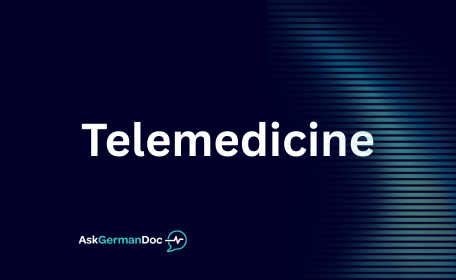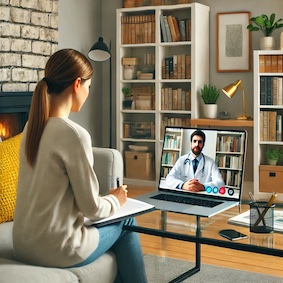The rapid evolution of internet-based technologies has significantly changed how healthcare is delivered, making it more accessible, precise, and patient-centered. From real-time health monitoring to AI-assisted diagnostics and telemedicine, digital tools are redefining how patients interact with medical systems. The internet has become a vital bridge between doctors, patients, and cutting-edge technologies.
Today, healthcare is entering a new digital era — enabling access to top specialists, personalized treatments, and medical support from virtually anywhere in the world.
How Internet Technologies Are Changing Healthcare
Digitalization in healthcare enables faster diagnoses, better data access, and more personalized care. The internet plays a central role by connecting clinics, physicians, and patients across platforms. One of the most promising aspects of digital health is the use of big data and artificial intelligence (AI).
Medical professionals can now analyze enormous datasets — including health records, genetic profiles, and treatment responses — to identify trends and personalize therapies. For instance, machine learning algorithms can help predict which medications may work best for specific genetic profiles or detect early signs of disease outbreaks, allowing public health measures to be taken proactively.
Digital technologies also help patients form supportive online communities and access telecommunication-based care. These communities — built around specific conditions — allow individuals to share experiences, ask questions, and find emotional and practical support.
Smart Devices
One of the most impactful developments in digital health is wearable technology. Devices such as smartwatches, fitness trackers, and health monitoring bands allow patients to continuously track vital health data, including:
-
Heart rate and rhythm
-
Blood oxygen levels
-
Blood pressure and pulse
-
Sleep quality and physical activity
These devices transmit data directly to physicians, allowing for real-time monitoring and more proactive care. This improves accuracy and helps detect early warning signs of illness.
Glucose Monitoring Systems
For people living with diabetes, Continuous Glucose Monitoring (CGM) systems have revolutionized disease management. These internet-connected sensors:
-
Eliminate the need for frequent finger pricks
-
Provide real-time glucose readings
-
Alert patients to dangerous highs or lows in blood sugar
Such tools are particularly helpful for children, elderly individuals, or those with cognitive impairments — improving medication safety and helping prevent emergencies.
Smart Hearing Aids
Modern hearing aids now integrate Bluetooth and smartphone connectivity, offering:
-
Personalized volume control
-
Direct audio streaming from phones or TVs
-
Enhanced noise reduction and speech clarity
These technologies significantly improve quality of life for both younger patients and older adults, offering discretion and convenience.
Clinic Equipment and Digital Tools
Many hospitals and clinics now use high-tech equipment that improves diagnosis and treatment outcomes. Examples include:
-
Defibrillators for rapid response to cardiac arrest
-
Nebulizers for treating respiratory diseases
-
Electronic medical records (EMRs) for instant access to patient history
These tools help reduce complications, improve clinical efficiency, and allow physicians to make faster, evidence-based decisions.
Telemedicine: Consulting a Doctor from Anywhere
With internet-based platforms, patients can consult with licensed physicians from the comfort of their homes. This is especially vital for individuals in rural areas with limited access to specialists.
Benefits of video consultations:
-
Accessibility— Speak with a doctor from anywhere in the world
-
Time-saving — No travel, no waiting rooms
-
Convenience — Share lab results and documents in advance
-
Access to top specialists — Including consultations with leading German physicians
Robotic Surgery: Precision Without Borders
Robotic surgical systems such as Da Vinci® have become a hallmark of modern medicine. These tools allow surgeons to perform complex operations with enhanced precision, including:
-
Tumor removal
-
Vascular reconstruction
-
Minimally invasive spinal procedures
Advantages of robotic surgery:
-
Minimal tissue damage
-
Faster recovery times
-
Lower risk of infection or complications
-
Enhanced surgical accuracy with remote control
Robotic systems are often integrated with telemedicine, enabling highly specialized procedures to be performed with remote collaboration across borders.
Challenges of Digital Integration in Healthcare
-
Uneven access to technology — Urban hospitals may be fully equipped, while rural clinics often lack modern infrastructure.
-
Lack of digital systems — Many institutions still operate without electronic records or telemedicine platforms.
-
Shortage of trained professionals — Medical staff need specialized training to use digital tools effectively.
-
Data privacy and cybersecurity — Personal medical information must be protected through robust security systems.
Ethical concerns are also growing: How is patient data used? Who controls it? Transparent communication, patient consent, and compliance with privacy regulations like GDPR are crucial to ensure trust and safety.
The Future of Medicine: Where Internet and Healthcare Meet
Digital health continues to evolve rapidly. Patients can already track their health using smart gadgets, consult with international doctors via video, and receive more accurate treatments powered by AI and big data.
Platforms like AskGermanDoc help bridge the gap between advanced German medicine and patients abroad, offering expert second opinions and access to cutting-edge diagnostics — all without the need to travel.
Disclaimer:
This article is for informational purposes only and does not constitute medical advice. Always consult a licensed healthcare provider before making decisions regarding diagnosis or treatment. AskGermanDoc does not offer direct medical treatment but facilitates second opinions with certified German physicians.
Sources
-
European Commission – Digital Health Europe Initiative
-
World Health Organization – Global Strategy on Digital Health 2020–2025
-
Bundesärztekammer – Guidelines on Telemedicine in Germany
-
Mayo Clinic & Cleveland Clinic Reports on Wearables and Remote Monitoring
-
Da Vinci Surgical System – www.intuitive.com


